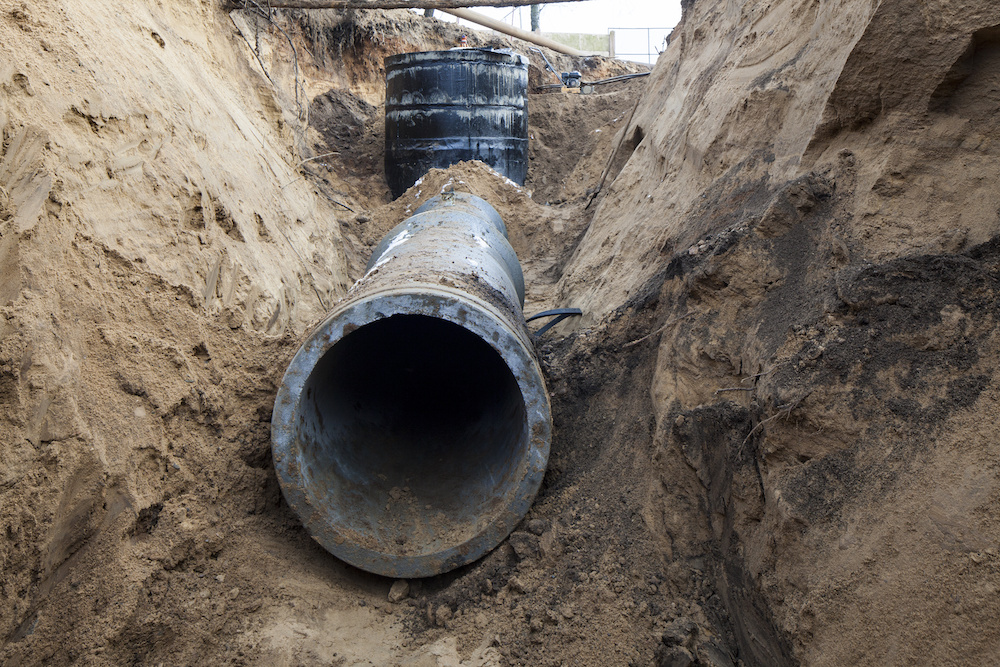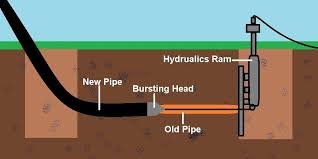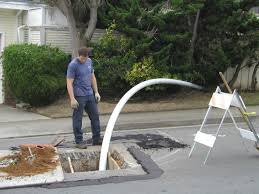How to Choose the Best Trenchless Sewer Repair Professional
Facing a sewer repair or plumbing project can be intimidating. Many homeowners are not seasoned professionals with years of plumbing experience, and rightfully choose to hire a professional to help tackle their sewer repair.
Find a Leader in Trenchless Sewer Repair Technology
When selecting a trenchless sewer repair professional, it’s important to find a professional who is well-versed in the latest trenchless sewer repair technologies.
There are many trenchless sewer repair methods, including pipe bursting, slip lining and cured in place pipe (CIPP). Pipe bursting, however, is seen as the superior option among these methods as it’s environmentally-friendly, long-lasting and offers a quick turnaround and less disturbance to the surrounding area.
Check for Proper Licenses & Certifications
When looking for a sewer repair professional, it’s important to check for the proper licenses and certification. Every sewer repair company should have the required certifications to install, repair and operate on sewer systems, sewer laterals, and other related plumbing issues.
Licenses
C-36 License. This license is a General Plumbing license all contractors are required to have to contract plumbing work within the footprint of a home’s interior.
C-42 License. This license allows contractors to work on sewer systems and other similar pipes such as storm drains or septic tanks on private property and public right of way.
A- License. This license is required for contractors who need to have specialized engineering knowledge and skill to work on fixed works and any public sidewalk or street.
B-License. This license is a General Building license required for any structures being built or rebuilt

The Benefits of Choosing Trenchless Sewer Line Repair
Traditional methods of repairing damaged sewer lines can mean disrupting walk and driveways, digging up lawns, and creating a mess. New technologies provide a way to repair the offending length of pipe at your home, business, or commercial property
Faster, Less Messy than Former Methods
When sewer lines fail, you need a fast solution to the problem and traditional methods of sewer line replacement can be as messy as the initial sewage backup. Equipment is often required to dig up the sewer line, replace it, and cover it up. In many instances, this may require tearing up sections of driveway, walkway, landscaping, and lawn.
Benefits of Choosing Trenchless Sewer Line Repair
Time is a factor for all, and the older methods of lateral sewer line repair require two to five days to carry out. This means that you may have to deal with the problem for several days. Some trenchless sewer line, repair jobs may be finished in one day. Getting the job done in a timely manner will help you get back into your routine in Sacramento and you will not need to call the landscaper or make a trip to purchase new plants.
Lower Cost Overall
The plumber you have called may replace the lawn they removed to access the sewer line but they will probably not replant your prized rose bed. The money saved on restoring damage due to the sewer line failure may outweigh the higher cost of trenchless sewer line repair. When you factor in the costs of replacing plants and lawns, trenchless sewer line repair can be the best fix and least costly method to get your water flowing freely.
Less Invasive
Replacing a sewer line with the conventional method requires that the leak is located, the yard trenched, the bad section of pipe replaced, the trench refilled, and sod replaced. When choosing trenchless sewer line repair the process is a little different.

How Affordable is Trenchless Pipe Repair Vs Traditional Repair?
If there’s one problem that every homeowner dreads, it’s the prospect of discovering faulty or damaged pipes somewhere on their property. Whether it’s a water or sewer line, broken pipes can cause a number of problems if they’re left unattended for too long. Traditionally, the digging required to repair or replace these pipes was a major undertaking that could last for several days and inflict significant property damage. Today, however, trenchless technology allows experienced plumbing contractors to do the same work in a fraction of the time with minimal digging.
Traditional Pipe Repair
On paper, traditional sewer pipe repair solutions are slightly less expensive than trenchless repair solutions. As this method of pipe replacement is more common, homeowners typically have many contractors to choose from.
The cost of trenchless technologies varies based on the method utilized. Two commonly-used trenchless technologies used for pipe repair/replacement are:
Lateral Pipe Lining: Sometimes called cured-in-place piping (CIPP), this technology uses existing pipe, adding a layer of epoxy resin to re-line the pipe, repairing cracks and closing gaps to prevent leakage and soil intrusion—basically creating a new pipe within the existing pipe. Costs for lateral pipe lining can range from $80 to $250 per foot.
Pipe Bursting. This technique uses a pneumatic or hydraulic head that destroys the old, broken pipe and drags in a new pipe to replace it. Pipe bursting tends to be a bit less expensive than lateral pipe lining, with costs ranging between $60 and $200 per foot of pipe replaced.
Hidden Costs of Traditional Pipe Repair Vs Trenchless Repair
There are a number of additional costs to consider when making repairs to a pipe that the sticker prices listed above simply don’t cover
For example, traditional trenching repairs don’t always include the cost of excavating the old pipe. Trenching can cost anywhere between $4 and $12 per foot; if the job is especially complicated, it may even require another contractor to perform the work. Also, if any large, heavy objects are located over the sewer pipes, there may be separate charges for relocating them before and after work is completed.

Steps to Choosing a Pipe Repair Method
As home owners we expect to replace our roofs, paint our homes, and maintain our landscaping. While these things are clearly seen to the eye, we tend to overlook the things we don’t see everyday, namely, our pipes! When a sewer pipe problem rears its ugly head what should you do? Here are three steps to solving your sewer pipe problems.
Low Quality V.S. High Quality | Why the cost difference?
A video inspection for a home can run anywhere from $99-$650 and for condominiums or commercial buildings the cost can be substantially higher due to the size of the job and difficulty to reach the pipes in question. The reason for the price difference has to do with the equipment that the company is using and what they provide you with after the inspection. Some sewer cameras cost upwards of $15,000 and produce HD footage in full color and are self-leveling (the footage stays upright), hence the greater cost. Other sewer cameras can be rented from a local home repair depot for an hourly rate and produce low quality footage, hence the lower cost. Some low quality cameras don’t even have recording capabilities, believe it or not. Sometimes, a low cost or free sewer inspection may require the customer to purchase pipe cleaning, or the company may not even give you a copy of the video (this may be because the camera used does not have recording capabilities).
Do I really need to pay for a high quality sewer video inspection?
In one word, yes. A high quality video inspection will be useful for both conventional plumbers and pipe lining contractors to give you a quote from. The reason that a pipe lining contractor especially requires high quality sewer video inspection is due to the nature of the work. Pipe lining is a very technical procedure, much more so than conventional replacement. The comparison of a low quality to a high quality video inspection can be likened to an X-ray as opposed to an MRI. An X-ray is limited to examining a few body conditions only, takes a few seconds to complete, and is very cheap. An MRI on the other hand is more versatile than the X-Ray, is used to examine a large variety of medical conditions, is much more time consuming, and justifiably more costly. Similar to an X-ray, a low quality video inspection often is done simply to identify obvious damage with the intent to replace the problematic pipe or clean it. A high quality sewer video inspection on the other hand will provide both conventional and pipe lining contractors with the details needed to prepare an accurate quote and make the necessary repairs.
What Information should a sewer video inspection include?
Pipelining Technologies, Inc. utilizes the best sewer cameras in the industry that produce clear footage and record key information regarding the problematic pipes. When performing a sewer inspection we take note of
Require a Plumbing Deficiency Report and Line Drawing
After you have had a video inspection done, the professional who did the work should give you a deficiency report and a not-to-scale line drawing of your drainage system. The deficiency report should call out areas in the sewer line that have cracks, tree root intrusion, channelling, blockages and so on. You may find that the main line has the problems and the vertical stacks have some time left before they need to be repaired or vice-versa.

TYPES OF TRENCHLESS SEWER REPAIR METHODS: WHICH ONE IS IDEAL?
The repair of sewer lines is time-consuming, costly, and disruptive to day-to-day activities. Traditional sewer repairs involve trenching. As such, you have to dig deep trenches in the street next to your home, driveway, pavements, car parks, or your back or front yard. Instead of rerouting traffic and paying lots of money to dig up such areas, you can opt to use trenchless sewer repair methods to avoid disruptions.
THE PIPE BURSTING METHOD
The pipe bursting trenchless sewer repair method involves inserting and pulling high-density polyethylene pipe (HDPE) through an old damaged pipe. The inserted pipe bursts open or fractures the damaged pipe without removing it. You have to dig holes on both ends of the lateral pipe before inserting the HDPE pipe. You have to connect a ‘bullet’ or ‘bursting’ head to the HDPE pipe and pull it through the old pipe.
SLIP LINING, PIPELINING, OR CURED IN PLACE PIPE (CIPP) METHOD
The slip lining sewer repair technique allows the installation of an epoxy liner into a damaged lateral sewer line. The repair creates a pipe within another pipe. The sewer lining or ‘cured-in-place pipe’ is tube coated with flexible resin. This lining gets pulled through the broken sewer line and inflated to harden and create a new pipe lining within the old damaged pipe.
IS THE CHOSEN METHOD FRIENDLY TO THE ENVIRONMENT?
Pipe bursting is a sewer repair method that is more friendly to the environment than CIPP. If not used well, the slip sewer lining method can release pollutants into the ground and utility lines. Research shows that some CIPP repair works have led to the release of styrene into storm-water. Styrene is a hazardous pollutant. Pipe bursting is thus safer than CIPP because it doesn’t involve the use of any chemicals with contaminants.
WHICH TRENCHLESS SEWER REPAIR METHOD IS MORE DURABLE?
Pro plumbers hold that both the sewer pipe lining and pipe bursting methods are long-lasting. CIPP sections last for at least five decades, and this can give you peace of mind. But the slip lining method may not last as long as the pipe bursting method because of the reduction of the diameter of the original sewer piping. But the pipe bursting method establishes a whole new pipe that can last longer than the ‘pipe within a pipe’ under the CIPP method.